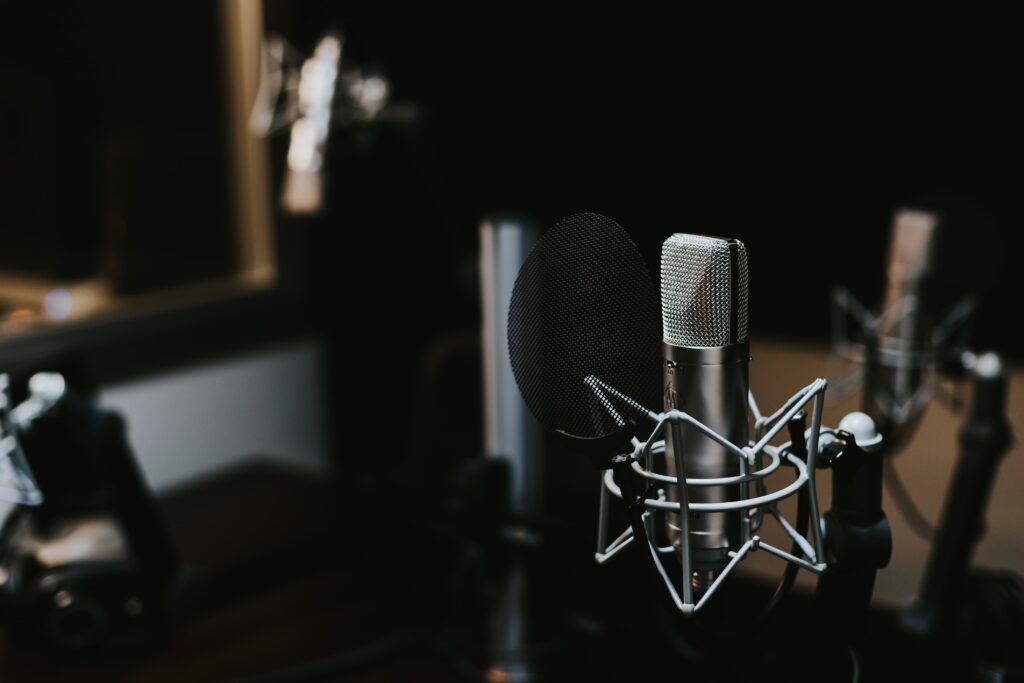Large-diaphragm condenser microphones convert sound waves into electrical signals using a thin membrane. These mics have a wide frequency range, high sensitivity, and fast transient response. This lets them record vocals, instruments, and other sounds with a lot of detail and nuance.
Large-diaphragm condenser microphones have existed since the early 1900s. Early microphones used a condenser to convert sound waves into electrical signals. They were sensitive to a wide range of frequencies.
Large-diaphragm condenser microphones have evolved. In the 1950s and 1960s, multi-pattern microphones changed the recording industry by letting users switch between sound-picking methods. In the 1980s and 1990s, digital recording technology made digital condenser microphones flexible and easy to use.
Recording studios and live sound applications use large-diaphragm condenser microphones. They come in many styles, shapes, and sizes to fit many needs and budgets.

What is a large diaphragm condenser microphone?
Large-diaphragm condenser microphones employ a thin membrane to convert sound into electrical information. Mics have a wide frequency range, excellent sensitivity, and fast transient response. This makes them useful for recording vocals, instruments, and other details. Large-diaphragm condenser microphones employ a capacitor to turn sound into electrical impulses. It needs an external power source, like a battery or phantom power supply. Large-diaphragm condenser mics are utilized in studios and live sound. They come in several styles, shapes, and sizes to meet many demands and budgets. They’re noted for their smooth, natural tone and attention to detail. They are used to record vocals, instruments, and other sounds with nuance and detail.
Types of Large diaphragm condenser microphone
Large-diaphragm condenser microphones are made for diverse uses and recording situations. Large-diaphragm condenser microphones include:
- Cardioid microphones: The cardioid pickup pattern of these microphones means they are most sensitive to sounds directly in front of them. Cardioid microphones are great for isolating a specific sound source, like a singer or an instrument, and are often used for live sound and recording.
- Omni-directional microphones: These can pick up sounds from all directions, making them perfect for recording sounds from all around the microphone. Omni-directional microphones are often used to record choirs, orchestras, and other sounds that need to be picked up from all directions.
- Multi-pattern microphones: Users can switch between different pickup patterns on these microphones, such as cardioid, omnidirectional, and figure-8 (which pick up sound from both the front and back of the microphone). Multi-pattern microphones are often used in recording studios and other professional settings because they can be used in more ways.
- Digital condenser microphones use digital technology to turn sound waves into electrical signals. They are more flexible and easier to use than analog microphones in several ways. In recording studios and other professional settings, digital condenser microphones are often used.
- Tube microphones: The diaphragm of these microphones sends out an electrical signal amplified by a vacuum tube. Tube microphones are known for their warm, smooth sound and are often used to record vocals, instruments, and other sounds with a lot of detail and nuance.
Features of Large diaphragm condenser microphone
Large diaphragm condenser microphones are known for their high sensitivity and fast transient response. They can also pick up a wide range of frequencies. Large diaphragm condenser microphones also have the following features:
- Wide frequency response: Large diaphragm condenser microphones can pick up frequencies from low bass to high treble. Because of this, they are good for recording vocals, instruments, and other sounds that have a lot of detail and nuance.
- High sensitivity: Large diaphragm condenser microphones are very sensitive to pick up soft sounds and nuances. Because of this, they are perfect for recording vocals and other sounds with a lot of detail.
- Fast transient response: Large diaphragm condenser microphones have a quick transient response, which means they can accurately record how sound waves start and end. Because of this, they are good for recording percussion instruments and other sounds whose waveforms change quickly.
- Adjustable pickup patterns: Some large diaphragm condenser microphones can be set up to pick up sound in different ways. For example, you can change figure-8, cardioid, and omnidirectional patterns and lets the user change how the microphone picks up the sound to make it work for the recording.
- Low self-noise: Large diaphragm condenser Carbon mic usually have low self-noise, which means that when they are in use, they make little background noise. Because of this, they are perfect for recording quiet sounds like vocals or acoustic instruments.
Conclusion
Studio recording is best done with a large-diaphragm condenser microphone because of its sensitivity and ability to pick up more sound energy. Vocals benefit from a wider frequency range when using these headphones since they are richer and warmer.




